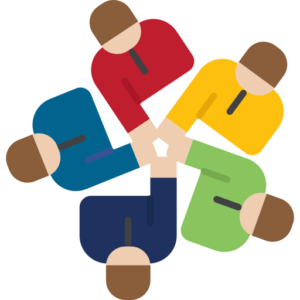The dedicated team model is a collaborative approach in software development where a remote team is exclusively allocated to a project, with an outsourcing vendor acting as a mediator. This model offers comprehensive control, transparency, and direct communication, allowing companies to meet their project requirements effectively.
In this article, we will explore the structure of a dedicated team, its benefits and disadvantages, and provide guidance on how to choose the right dedicated team for your project.
Structure of a Dedicated Team
A dedicated team’s structure is tailored to the specific project requirements and can include various professionals. Typically, an Agile team consists of
- Developers: Responsible for analyzing user needs and writing code for new systems or software.
- QA engineers: Evaluate the quality of specifications and technical design documents to ensure a high-quality end product.
- UX/UI designers: Create user interfaces based on user feedback and ensure logical product flow.
- Business analysts: Bridge the gap between IT and business, outline requirements, and deliver data-based recommendations.
- Project managers: Accountable for the project’s scope, initiation, design, and successful completion.
Dedicated Team Benefits
The dedicated team model offers several advantages, including:

- Comprehensive control: Companies have full control over the team structure, allowing for easy scalability and modifications as per project needs.
- Transparency and direct communication: Dedicated teams communicate directly with clients using collaboration and tracking tools, eliminating communication barriers.
- Access to a vast pool of professionals: The model enables companies to fill skill gaps by selecting specialists with the required expertise, ensuring a perfect fit for project requirements.
- Rapid ramp-up times: Onboarding a dedicated team is faster compared to traditional recruitment, minimizing the time gap between idea conception and project commencement.
- Cost efficiency: The budget is predictable and defined, making the dedicated team model economically viable for long-term projects.
- Highly scalable teams: The team size can be easily adjusted to handle varying workloads and accommodate project growth.
- Motivated team members: Long-term cooperation and continuous feedback foster motivation and drive value for the company.
- Focused approach: With dedicated teams fully involved in solution development, team members can specialize and hone their skills in a specific domain.
Dedicated Team Model Disadvantages
Despite its advantages, the dedicated team model may not be suitable for every project. Some disadvantages include:
- Inept for short-term projects: This model is better suited for long-term projects with evolving requirements and defined goals.
- Clear requirements are essential: Well-defined project requirements are necessary to assemble a team of specialists effectively.
- Onboarding time: Onboarding the selected specialists and integrating them with the in-house team can take time and effort.
- Complexity in pricing: The dedicated team model can be trickier to estimate compared to fixed-price models, often requiring salary+fee or hourly rate pricing.
Dedicated Team vs. Time and Material (T&M)
Both the dedicated team and T&M models are suitable for flexible pricing and continuous product development. However, there are key differences:
T&M model:
Clients pay for the actual working time spent on building pre-defined project functionality, focusing on labor costs.
Dedicated team model:
Monthly salary of all team members and administrative costs are included in the compensation, suitable for long-term projects with specific requirements.

Dedicated Project Team vs. Part-time Project Team
Dedicated project teams differ significantly from part-time project teams. The key distinctions are:
Part-time team:
Often involves overlapping time zones and availability challenges, suitable for projects with lesser time commitments.
Dedicated team:
Provides continuous support and is ideal for long-term projects requiring full-time commitment and ongoing communication.

